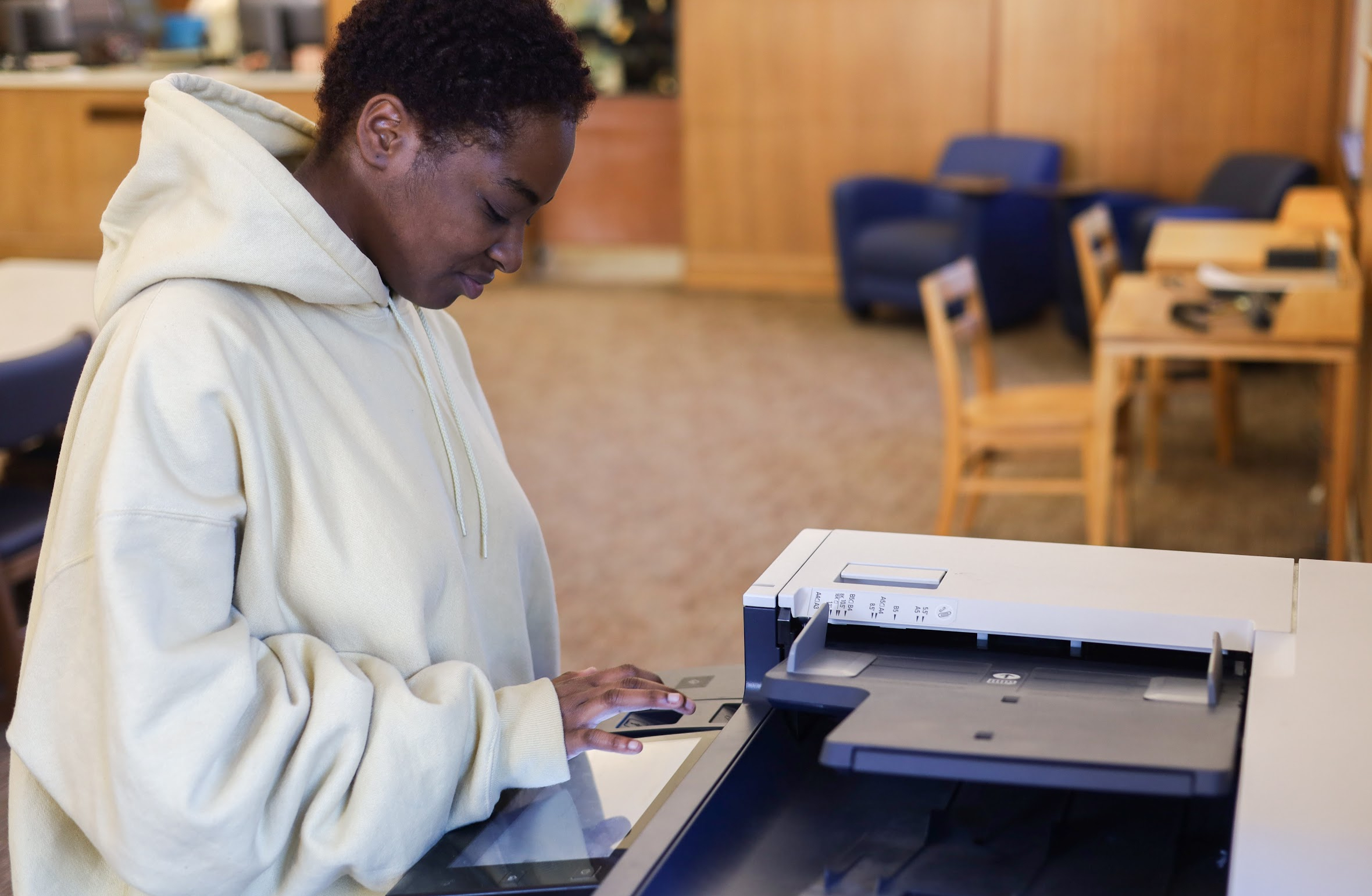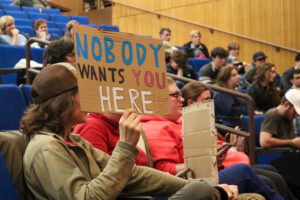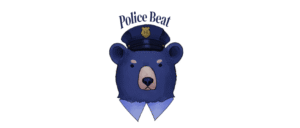The Communication and Journalism (CMJ) Department at the University of Maine has seen a shift toward digital learning that makes printing almost unnecessary for some faculty members. However, other instructors prefer to keep certain aspects of their courses physical.
Printing can be costly when done in mass amounts. While the price of individual sheets is about five cents, it can add up quickly if hundreds of people choose to print dozens of copies daily. In the CMJ department specifically, faculty members are encouraged to keep printing to a minimum, but that is no longer to save money, according to Department Chair Dr. Judith Rosenbaum-Andre.
About five years ago, printing funds were withdrawn from a larger budget in each department. This budget, which involves education and general funding allocations, sets aside a certain amount for operating expenses, including supplies and materials.
CMJ naturally receives less external funding, according to College of Liberal Arts and Sciences (CLAS) Director of Administration and Finances Susannah Fisher. She added that its needs tend not to vary year by year, which is why CMJ has the exact same budget as last year.
There was originally a base budget that remained unchanged unless there were cuts. About three years ago, a zero-balance budget system was introduced, allowing departments to outline their broad needs and receive funding accordingly. However, there is no carry over from previous years.
In terms of the requests, there are now broader, less specific categories than in previous years. This generalized submission allows for more freedom in departments. Some funds can even be transferred depending on where the needs are stronger. Ultimately, requests are approved by the administration and finance office.
Printing being previously charged to departments caused complications. Some instructors who teach across multiple majors experienced difficulties using the system.
“The time people spent trying to figure everything out was not a good use of everyone’s time. We have limited human resources on the campus, so, it’s not any use of someone’s time,” said Fisher.
The current system is centralized, so the university is billed for all printing. Fisher says printing can be a big cost to the university despite most individual print jobs being under one dollar. She added that although the CLAS operating budget is the same as last year, it was cut down significantly prior.
For CMJ, there have been multiple correspondences from Dr. Judith Rosenbaum-Andre, requesting that faculty keep printing to a minimum. She noted that this was her decision, initially to save money, but now to be more environmentally conscious.
A few years ago, budgets tightened not only within the CLAS, but also across the board. Rosenbaum-Andre added that surpluses from previous fiscal years no longer carried over, eliminating the cushion they previously had. CMJ funds were spent with this in mind, which included a cut back in printing.
“By minimize, I meant no printing out hundreds of pages of worksheets or readings that could just as easily be shared on Brightspace,” said Rosenbaum-Andre. “Printing out lesson plans, a single article, or other odds and ends was always fine.”
With the currently centralized printing system, departments are no longer paying for their printing. Rosenbaum-Andre says the motive to cut back is more environmental at this point, to minimize waste and save trees.
Some professors have fully leaned into a digital approach and found success.
“With the changes in printing, I’ve now basically abandoned all hard-copy printing in all my courses. Everything is now digital,” said CMJ Professor Michael Socolow.
Socolow mentioned course syllabi that used to be physically distributed in class can now be accessed via Brightspace. The system is also a host for all assignments and student submissions. Fully digital teaching can be a big jump for some, especially in the humanities where many classes are writing or reading intensive.
Professor Ulrich Regler in the CMJ Department favors a more traditional teaching style, which limits technology used in his lectures. He does not use Powerpoint presentations to share content so that the appeal of his lessons is not taken away.
“I find that it lacks engagement, it lacks personality, it lacks meaningfulness. I feel like, with a PowerPoint, you’re just reading off it basically,” said Regler.
Regler wants his lessons to sound more like a conversation. He worries that introducing a slideshow would compel students to write down exactly what is presented, as opposed to absorbing the information more naturally, favoring critical engagement over memorization.
However, he feels that assignments and exams now being digitized have not changed the nature of student learning. Typing papers is less physically demanding than handwriting them, and online assessments allow for students to test at their convenience.
“I used to like students to print and hand me things, but it’s true, I would get stacks and stacks of papers and filing cabinets filled up really quickly,” said Regler. “So it’s more efficient to grade that way [digitally].”
Regler added that some courses require physical engagement, such as Public Speaking, because in-person communication is vital. When held online, students can simply choose not to participate by turning their cameras off. Communication and journalism depend on engagement, whereas other disciplines center around using technology. Regardless, the department as a whole is slowly eliminating the use of paper.
When it comes to modern journalism, multimedia storytelling has grown in popularity. For this reason, CMJ Professor Ellie Markovitch offers tools in her production classes to help students report using several mediums. She notes that as technology continues to evolve, journalists must keep up with it.
“Technology has fundamentally changed how news is produced, distributed and consumed. I try to provide opportunities for students to explore digital tools and platforms,” said Markovitch.








